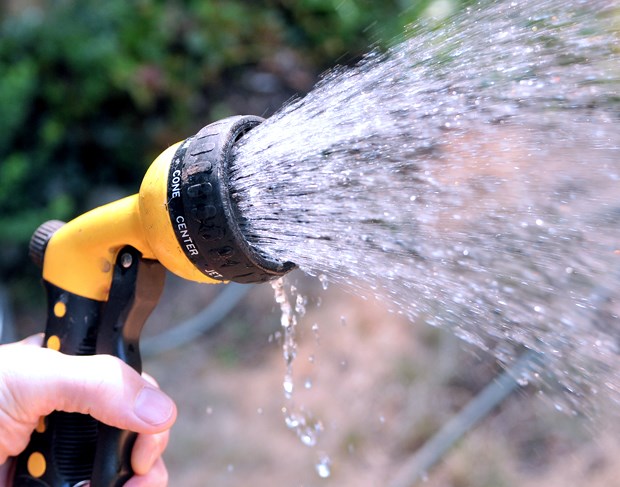What a difference a year makes.
Last year at this time, North Shore water snitches were calling out their neighbours for being “midnight hosers” while water managers watched reservoir levels falling with alarm.
But a soggy start to summer this year – which included over twice as much rain in June and July as last year – curbed outdoor sprinkling while keeping water supplies healthy.
More rain and slightly lower temperatures than last year have combined to keep utility managers happy.
“We’re in much better shape this year than we were last year,” said City of North Vancouver Mayor Darrell Mussatto, who is chair of Metro Vancouver’s utilities committee.
Partly in response to the drought conditions last year, stage one watering restrictions began two weeks earlier this year, in May.
But there are no plans to tighten restrictions as happened last summer when sprinkling was banned. Complaints about neighbours flouting the rules have been few and far between, say North Shore municipal staff.
Water levels in the Capilano, Seymour and Coquitlam reservoirs are sitting at a comfortable 73 per cent, well within the range of normal. In contrast, last year those levels had dropped below 70 per cent in July and continued to fall rapidly into August.
At the start of the season this year, Metro Vancouver arranged to buy 80 billion litres of water from BC Hydro, which operates the Coquitlam reservoir – up from last year’s 60 billion litres – just in case.
“Last year was a real learning year for us,” said Mussatto. “It was the driest year we’ve ever had on record. The residents have learned from that as well.”
Average per capita per day use across the Lower Mainland has hovered at about 471 litres of water in recent years, which can pump up to more than 650 litres per day during days of peak summer demand.
This summer, however, per capita water use is down, said Mussatto. Water use on “peak demand” days has also been less so far. On July 28, Metro residents sucked up about 1.47 billion litres of water. Last year, peak water use came a month earlier, on July 2, and topped out at 1.7 billion litres of water.
In West Vancouver, where the municipality supplies about half of its residents through the Eagle Lake reservoir, water managers were also relieved to see the rains in June.
Water levels in the reservoir are normal, said Andy Kwan, manager of utilities for the municipality, adding the district has only recently had to turn on the floating pumps that draw water from deeper levels in the lake.
Last June, after water use shot up to almost 800 litres per capita per day in West Vancouver, the municipality – which uses water meters – began a pilot program of sending letters to residents whose water use was much higher than average. Letters alerted them to that fact and to possible causes – such as irrigation system settings.
This year, water use in June was about half that of 2015 – about 25 cubic metres per household for the month, so letters only went out to those whose water use is five times the median, said Emily Willobee, policy and program planner with the district.
In many cases, people just don’t realize their water use is high, she said. “They don’t have the opportunity to compare their water use to others.”
While water supplies are on track to last the rest of the summer, Mussatto warns residents may notice some dramatic changes to the Capilano reservoir near the end of the month.
A drum that controls the spillway at the Cleveland Dam needs to be resurfaced to protect against corrosion, said Mussatto. Work has to be done during dry weather and requires drawing water levels down in the reservoir to below what was seen last year.
“It will be very visible,” said Mussatto, but added the Metro water system won’t be harmed by the water drawdown. The system will likely make greater use of water in the Seymour and Coquitlam reservoirs during that time.
Mussatto said metro managers always leave a healthy buffer when drawing down the reservoirs. “I don’t think we’ve ever gone below half.”
Water managers are also still studying the potential costs and benefits of bringing in water meters in the future, along with other water conservation measures, he said.



